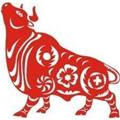Kapela Harnasie
Hej tam spod Tater
2002
Tracks:
01. Kupiym se korole Nie pódym jo z tela
02. Malorz
03. Niedaleko Lewocy
04. W Bernie
05. Hej ta spod Tater
06. Szalała
07. Hej Janicku siwy włos
08. Corne ocy
09. Mioł nos łociec
♥ 10. Idzie dysc
11. Hej horolecka
12. Mamo moja
13. Jo za wodom
14. Orawa
15. Tocy się mi tocy
16. U kowala
17. Syćkok ci godała
18. Góralu czy ci nie żal
♫☆`*♥¸¸.•*¨*•♫☆`*♥¸¸.•*¨*•♫
♫☆`*♥¸¸.•*¨*•☆♫`*♥¸¸.•*¨*•♫
Harnaś - Tatra and Carpathian brigand. Famous Harnasie were: Juraj Janosik, Ondraszek, Tomas Uhorčík... (see Robin Hood)
Sabała the legendary Góral bard and musican, used to say:
To hang on the gibbet is an honourary thing!
They don't just hang anybody, but real men!
Sabała the legendary Góral bard and musican, used to say:
To hang on the gibbet is an honourary thing!
They don't just hang anybody, but real men!
Could not find much info about the music.
and that's all that wiki tells us:
Local ensembles use string instruments like violins and a cello to play a distinctive scale called the Lydian mode. The distinctive singing style used in this scale is called lidyzowanie. The lead violin (prym) are accompanied by several second violins (sekund) and a three-stringed cello (bazy). Duple-time dances like the krzesany, zbójnicki (Brigand's Dances) and ozwodna are popular. The ozwodna has a five bar melodic structure which is quite unusual. The krzesany is an extremely swift dance, while the zbójnicki is well-known and is perceived as being most "typical" of Podhale and Northern Slovakia. Folk songs typically focus on heroes like Janosik.
*Goral (mountaineer)
source: Music of Poland
The music of the Górale
folk tradition is usually performed by a small string ensemble,
resembling the make-up of a string quartet: a lead violin performing
ornamental melodies, two accompanying violins, and a three-stringed basy,
providing the harmonic basis for the chords.
The basy is smaller than the double-bass, roughly the size of a
cello.
The second violin and the basy play rhythmic quarter-notes in duple
meter with strong accents, providing the rhythmic framework for the
music.
In the nuta zbójnicka (the zbójnicki tune), the rhythm is upbeat and lilting;
in Timothy Cooley's words "the accompanying violins bow downward on each beat with the basy
and add an up-bow in-between each beat (1&2&1&2&1&2), effectively playing twice as fast as the basy."
(from Fire in the Mountains CD, Yazoo 7013; 1997, p. 8-9). Another common instrument used in the area was a simple carved string instrument
resembling a basic fiddle, called "złóbcoki." ...
read some more here
♥








.gif)


















































+Front.jpg)


















No comments:
Post a Comment